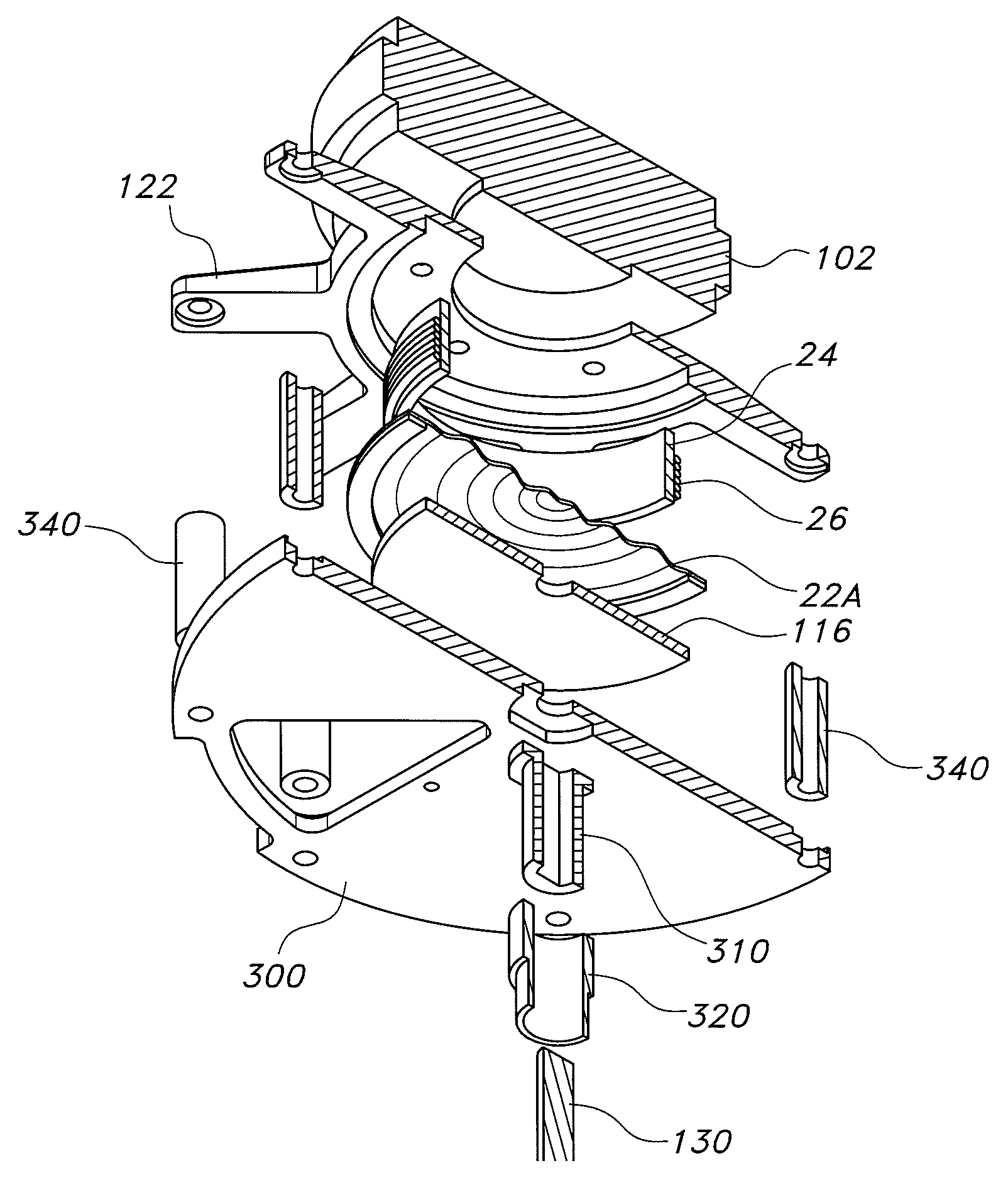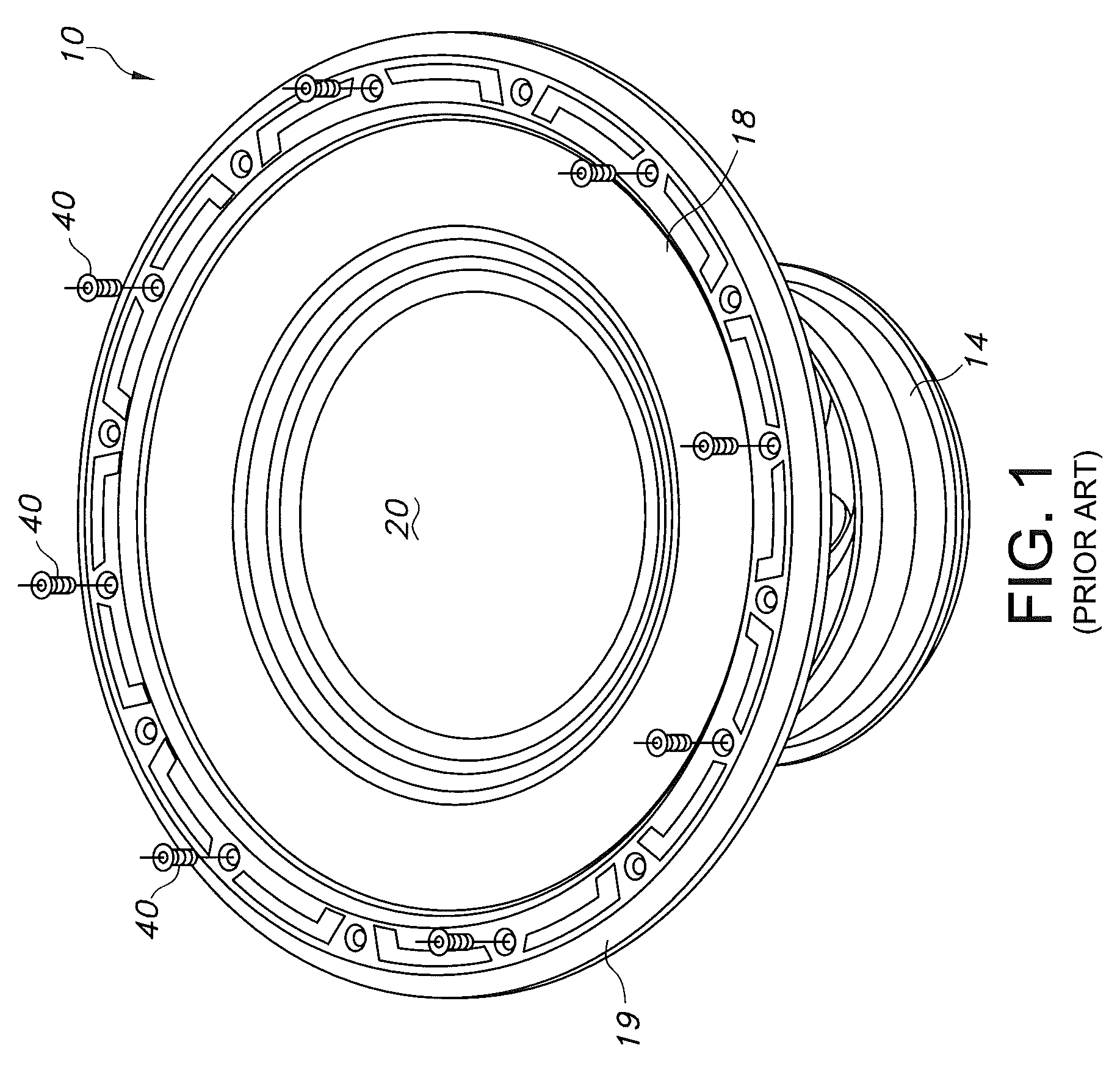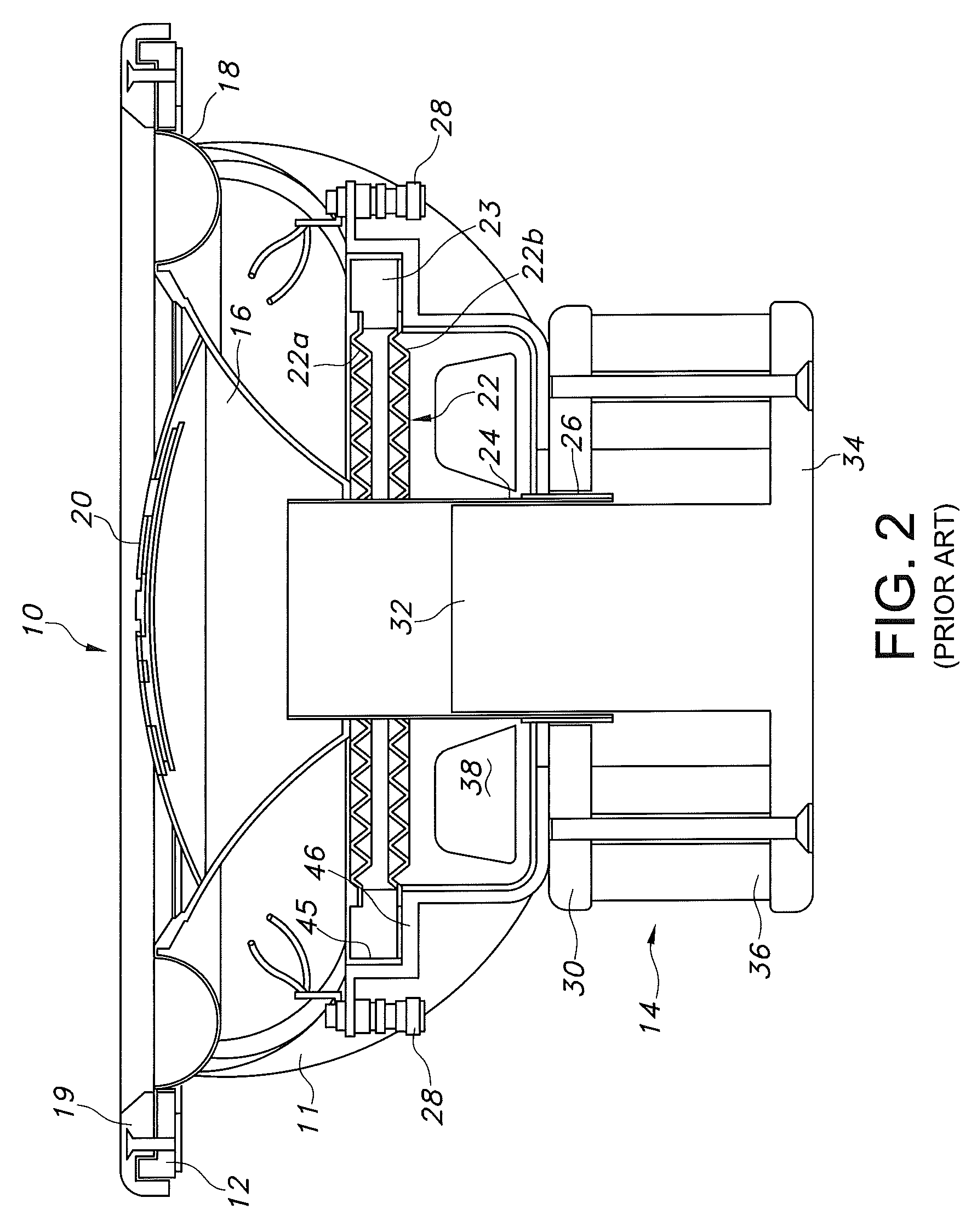Compact low frequency audio transducer
a low-frequency audio and low-frequency technology, applied in the field of loudspeakers or audio transducers, can solve the problems of poor sound reproduction, woofer failure, and generating substantial amounts of hea
- Summary
- Abstract
- Description
- Claims
- Application Information
AI Technical Summary
Benefits of technology
Problems solved by technology
Method used
Image
Examples
Embodiment Construction
[0047]Turning now to FIGS. 3A-14, the components and configuration of a first embodiment of a bass pump transducer 100 are illustrated, in accordance with the present invention. Compact bass pump transducer 100 uses at least one, and preferably two opposing linear reciprocating electrodynamic motor structures 102, 104 configured to drive a push-pull reciprocating gear or worm gear to rotate a shaft which in turn applies controlled rotation force to each vane.
[0048]Electrodynamic motor structures 102, 104 resemble the standard woofer motor 14 illustrated in FIGS. 1 and 2, but are used to drive a very different kind of air displacement mechanism. Thus, electrodynamic motor structures 102, 104 may each include at least one electrically conductive voice coil 26 having two ends (plus and minus) is wound around voice coil former 24; the voice coil ends (plus and minus) are each electrically connected to a single terminal connector 28 by a releasable electrical connection. Optionally, firs...
PUM
 Login to View More
Login to View More Abstract
Description
Claims
Application Information
 Login to View More
Login to View More - R&D
- Intellectual Property
- Life Sciences
- Materials
- Tech Scout
- Unparalleled Data Quality
- Higher Quality Content
- 60% Fewer Hallucinations
Browse by: Latest US Patents, China's latest patents, Technical Efficacy Thesaurus, Application Domain, Technology Topic, Popular Technical Reports.
© 2025 PatSnap. All rights reserved.Legal|Privacy policy|Modern Slavery Act Transparency Statement|Sitemap|About US| Contact US: help@patsnap.com



